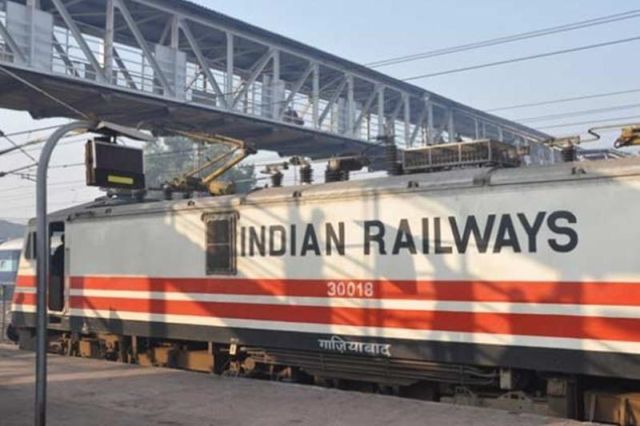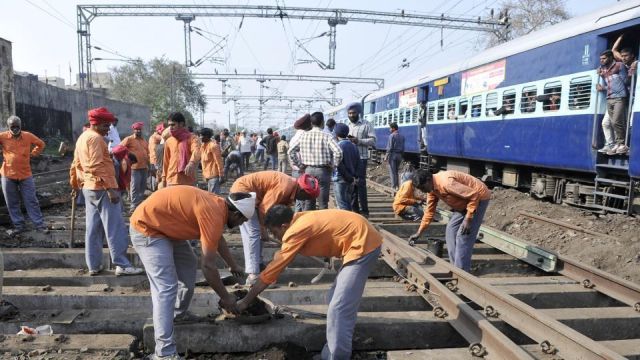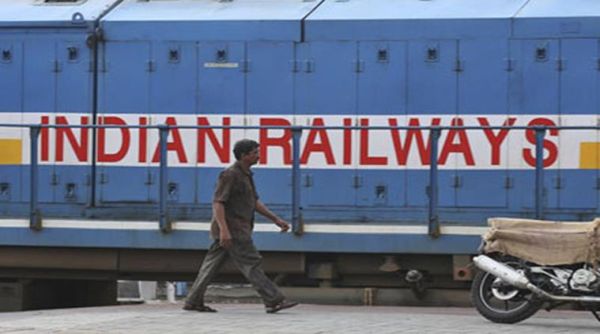
by admin | May 25, 2021 | Corporate, Corporate Governance
 By Arun Kumar Das,
By Arun Kumar Das,
New Delhi : Indian Railways will now digitise the submission of bills by vendors for payment and issue of inspection certificates by inspecting agencies with the aim of achieving complete digitisation of its contract management.
Besides, the state-run transporter has introduced the letter of credit (LC) mode of payment as an option in supply/works contracts to improve transparency and the ease of doing business.
“It has been decided that all tenders for supply/works having an estimated value of Rs 10 lakhs (over $15,000) and above shall include in tender conditions an option for the contractors to take payment from railways through LC arrangements,” said a senior Railway Ministry official.
It would cost 0.15 per cent of the LC to the contractors.
Indian Railways has already undertaken steps for digitisation of its entire supply chain in a bid to adopt end-to-end paperless working in contract management by eliminating human intervention.
“Now, one does not have to come to the Railways office for submission of bills and getting inspection certificates,” said the official, adding: “Bill approval status can be tracked online.”
The system includes digitisation of processes like bill submission, inspection, dispatches, receipt, bill passing and bill payments, and warrantee monitoring.
With 100 per cent e-tenders and e-auctions already assimilated into the system, the Railways is further planning to build on these initiatives to achieve seamless flow of materials, finances and information.
The Indian Railways has a vast supply chain to maintain, sustain and build its huge asset base, to run the system, and to provide transportation services.
The Railways’ supply chain has a large number of stakeholders and involves huge recurring expenditure of about Rs 50,000 crore annually. This supply chain generates large volumes of business and employment upstream and hence is critical in the Railways’ functioning.
Currently, the Railways has about 52,000 suppliers registered with a huge transaction order of rolling stock, track items, maintenance spares and other such items.
The supply chain digitisation would encompass integration of information flows, physical flows, and financial flows between railways and its supply chain partners. It involves completely digitising the internal business processes of material supply chain and seamlessly integrating processes controlled by different stakeholders digitally to achieve a completely integrated, paperless and digitised supply chain.
(Arun Kumar Das is a senior Delhi-based freelance journalist. He can be contacted at akdas2005@gmail.com)
—IANS

by admin | May 25, 2021 | Corporate, Corporate finance, Corporate Governance, News, Politics
 By Arun Kumar Das,
By Arun Kumar Das,
New Delhi : Stepping up its efforts to prevent train derailments, Indian Railways is opting for the latest technology to reduce its dependence on manual inspections and to improve the track maintenance system of its rail network.
Automatic track geometry-cum-video inspection systems, ballast regulating machines, rail grinding machines, automated multifunction track recording cars and ultrasonic flaw detection systems (USFD) are some of the modern equipment to be procured by the state-run transporter at an estimated cost of Rs 2,726 crore.
The Railways has allocated Rs 7,267 crore in the 2018-19 budget for safety-related works — including track inspection, repair and maintenance — a massive jump from Rs 1,933 crore in 2017-18, underlining the top priority its is giving to accident prevention measures.
“Till now, the Railways depended heavily on manual monitoring method to detect cracks in rail, defective fittings, ballasts, concrete sleepers and other track-related systems,” said a Railway Ministry official.
The inspection of tracks has a clear bearing on safety and with increased train speeds and traffic, manual inspections are not only becoming unsafe for the inspecting staff but are also becoming difficult due to the shorter intervals between running trains.
“Now the focus is to shift from the manual method to state-of-the-art technology like the automatic track geometry-cum-video inspection system to detect defects. It is a proven technology and operational worldwide, including in Germany and Britain,” the official said.
In the first phase, these will be fitted under the last coach or the guard’s van of fast-moving Rajdhani trains. The system is capable of recording track geometry and video footage of track components which can be assessed by officials for necessary action.
“We are procuring 16 automatic track geometry-cum-video inspection systems, and 12 vehicular USFD machines to detect flaws in the tracks,” the official said.
Besides, the Railways is also acquiring eight rail grinding machines to remove minute cracks on the tracks and 40 axle box accelerometers to detect unevenness on the rails.
The Railways shopping list also includes 30 ballast regulating machines, 20 ballast cleaning machines and four automated multifunction track recording cars to strengthen and upgrade its track maintenance systems.
(Arun Kumar Das is a senior Delhi-based freelance journalist. He can be contacted at akdas2005@gmail.com)
—IANS

by admin | May 25, 2021 | Employment, Government Jobs
 New Delhi : Ministry of Railways on Monday relaxed the upper age limit by two years for all categories in one of the world’s largest recruitment drive for about 90,000 jobs.
New Delhi : Ministry of Railways on Monday relaxed the upper age limit by two years for all categories in one of the world’s largest recruitment drive for about 90,000 jobs.
“For the ongoing recruitment of Group C Level I & II posts, Ministry of Railways have decided to extend the relaxation in upper age limit,” the ministry said in a statement.
Further, the candidates would have the option to take the exam in regional languages like Malayalam, Kannada, Telugu, Tamil, Odia, Bangla and others, it said.
“Last date of submission of application would be extended suitably,” it added.
Earlier, the ministry had invited online applications for 89,409 posts in Group C Level 1 (erstwhile Group D) like track maintainer, points man, helper, gateman, porter and Group C Level 2 categories like assistant loco pilots (ALP), technicians (fitter, crane driver, blacksmith, carpenter) through Railway Recruitment Boards websites.
For the Group C Level 1 posts, the upper age limit for unreserved community has been extended from 31 years to 33 years, for backward OBC community from 34 years to 36 years and for the SC/ST categories, it has been raised from 36 years to 38 years.
Similarly, for Group C Level 2 posts, the upper age limit for all communities have been raised by two years. For unreserved community, it is now 30 years, for OBC, it is 33 years and for the SC/ST communities, it is now 35 years.
Formal corrigendum is being issued on official websites of RRBs shortly along with the new last date of submission of application, said the press release.
This recruitment drive is open for candidates who have passed Class 10 and industrial training ITI for Group C Level I posts, and Class 10 and ITI or diploma in engineering or a graduation in engineering for Group C Level II posts.
—IANS

by admin | May 25, 2021 | Business, Corporate, Corporate Governance, Economy, Large Enterprise, News, Politics

Steam locomotives (For representational purpose only)
By Arun Kumar Das,
New Delhi : Steam locomotives will be chugging along on all hill railways across the country — besides charting out a new course on the Delhi Ring Railway — as the Railways pushes the idea of reviving the glory of its steam heritage.
With the successful operation of a steam-hauled train on the Palanpur-Jogindernagar section of Kangra Valley Railway, all five hill railways now have steam loco services to attract tourists.
Kangra Valley Railway, which is on the tentative list of Unesco’s World Heritage Sites, witnessed the revived steam loco operation recently after more than 20 years. The regular steam loco operation is expected to boost tourism in Himachal Pradesh.
While Darjeeling Himalayan Railway and Nilgiri Mountain Railway have regular steam locos services, the Kalka-Shimla Railway and Matheran Hill Railway are equipped to conduct chartered services on tourist demand.
But the big thrust will be seen in the capital’s long-neglected — and once-popular — Ring Railway, that has fallen by the wayside as the city expanded rapidly.
“It is a big revival of steam locomotives in Indian Railways, and our aim is to have regular steam loco operations in all hill railways — and also in the long-awaited Delhi Ring Railway route,” said a senior Railway Ministry official involved with rail heritage.
With the advent of diesel and electric locomotives, steam engines were phased out in 1995 by the Railways.
Though there was a move to run a steam locomotive on the Delhi Ring Railway during the Commonwealth Games in 2010, this did not materialise for various reasons.
However, the state-run transporter is now actively working on reviving the service to showcase its heritage, bring back the romance of steam engines and promote tourism. The task has been assigned to Northern Railway.
The existing 34 km-long ring railway, which runs parallel to the Ring Road, passes through several prominent places of Delhi like Chanakyapuri, Safdarjung and Sarojini Nagar and is expected to attract large numbers of tourists and rail enthusiasts interested in steam locos.
As per the plan, the train, comprising four heritage coaches with a steam locomotive, would start from Safdarjung station and travel to Anand Vihar, Old Yamuna Bridge, Old Delhi, New Delhi and Nizamuddin station before returning to Safdarjung.
Tourists will be able to visit the Red Fort, Chandni Chowk, National Rail Museum, the historic Old Yamuna Bridge, Humayun’s tomb and rail buildings such as Old Delhi station, Kashmere Gate and Baroda House by using the service.
“The landscape along the proposed route will be beautified, besides other necessary arrangements to make it operational. The fare structure and timings are yet to be decided,” the official said.
“Two options are being considered: A round trip or a hop-on-hop-off ticket,” the official added.
At present, there are very few steam locos across the world that are still in working condition.
(Arun Kumar Das is a senior Delhi-based freelance journalist. He can be contacted at akdas2005@gmail.com
—IANS

by admin | May 25, 2021 | Corporate, Corporate Governance
 By Anand Singh,
By Anand Singh,
New Delhi : Indian Railways’ all new 12,000 horsepower electric locomotive — being produced in collaboration with Alstom of France and which can run at speeds of up to 120 kmph — would be rolled out in March when French President Emmanuel Macron visits India, Railway Ministry sources said.
According to the sources, the assembly of the first 12,000 hp locomotive at Bihar’s Madhepura plant is complete and its trials are on. “The all new engine would be rolled out in March this year, when Macron will visit India to participate in the International Solar Alliance meeting,” the source told IANS, not wishing to be identified.
Prime Minister Narendra Modi, during his visit last week to Davos for the World Economic Forum, announced that the French President would be participating in the International Solar Alliance meeting in March.
The official also said that the new WAG 12 electric locomotive would be used to haul freight trains. It can haul about 9,000 tonnes of goods.
The first body shell of the twin-section electric locomotive from Alstom’s factory in France arrived in India last September.
“The WAG 12 will enable Indian Railways to have a fleet of locomotives equipped with state of the art propulsion technology,” Alstom Vice President Sales and Business Development (Asia Pacific) Bharat Salhotra told IANS.
“Induction of 12,000 HP locomotives will be a transformational step as it will allow Indian Railways to run heavy haul and long haul trains over the Dedicated Freight Corridor,” Salhotra said.
The Railway official said that the increase in speed would result in improving line capacity in the rail network.
“It will help in speeding up movement of goods trains by increasing the current average speed of the freight trains from 60 kmph to 100 kmph,” the official said.
According to ministry officials, Indian Railways currently uses 6,000 hp locomotives for freight services.
The Alstom VP also opined that the step of the government will position “Indian Railways as among the very best in the world when it comes to freight haulage”.
“These high horsepower electric locomotives are being built in compliance with the Indian standards of freight transport and are designed for the tough Indian climatic conditions,” Salhotra said.
“The significant jump in the operating parameters will also allow for faster, safer and more reliable freight movement across the country, thereby reducing congestion for passenger train services and freight services, as also reduce the logistics cost of rail transportation,” he said.
According to the Railway Ministry, Indian Railways will manufacture 800 such electric locomotives over the next 11 years in a joint venture with the Alstom at the Madhepura locomotive factory.
The Railways had awarded the Rs 20,000 crore project to Alstom in November 2015 after the commissioning of the factory in Bihar. The FDI component in the Madhepura project is about Rs 1,200 crore.
“A total of 800 double section freight electric locomotives will be supplied followed by the associated long-term maintenance of the electric engines,” the Alstom VP added.
The project also includes two maintenance depots in Uttar Pradesh’s Saharanpur and Maharashtra’s Nagpur.
A total of five locomotives will be assembled at the factory by 2019, and rest will be manufactured under the Make in India initiative.
As per schedule, 35 locomotives would be rolled out from the factory by 2020, 60 in 2021, followed by 100 every year till the target of 800 is met.
According to the Alstom, the Madhepura factory is a true embodiment of the government’s Make in India vision with a localisation of almost 85 to 90 per cent of components.
(Anand Singh can be contacted at anand.s@ians.in)
—IANS




